Calculate Out-The-Door Price
close
With this easy test, a penny can buy you peace of mind when it comes to your tires and safety.
Place a penny head first into several tread grooves across the tire. If you always see the top of Lincoln’s head, your treads are shallow and worn. If this is the case, your tires need to be replaced.
If part of Lincoln’s head is always covered by the tread, you have more than 2/32 of an inch of tread depth remaining. This means you probably don’t need new tires.
When your tire treads are worn, your car may respond poorly in adverse weather conditions like rain and snow. With good treads, your car will grip the road better. Also, having insufficient tread is considered illegal in many states.
And finally, worn treads can make other parts of your car wear prematurely.
Potential Problem Areas:
When it’s time to change your tires, your Firestone Complete Auto Care dealer wants to make purchasing a new set as simple as possible. We have the best selection of quality tires to fit your vehicle, your budget and your driving style. From economy to ultra high performance tires - in the size you need from brands you trust, including our well-known Bridgestone and Firestone brands - you can find what you need right here.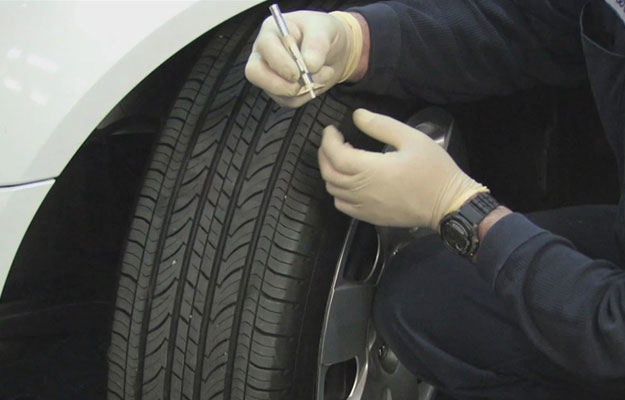
Make a selection from the following options:
Shop for Tires
Find a Store Near You
Schedule an Appointment
{{storeNumber}}
{{storeName}}
{{link-icon "Call Us" mobileCallLink null "call-cta"}} {{link-icon "Directions" directions "_blank" "directions-cta"}}
{{address}}
{{city}}, {{state}} {{zip}}
{{#if activeFlag}} {{#ifCond mystore "or" myPreferredStore}} {{#ifCond storeType 'eq' "TPL"}}
*Call store for appointment {{phone}}
{{else}} {{#if onlineAppointmentActiveFlag }}
{{#if myPreferredStore}}
{{else}}
*Call store for appointment {{phone}}
{{/if}} {{/ifCond}} {{else}} {{#ifCond storeType 'eq' "TPL"}}
*Call store for appointment {{phone}}
{{else}}
Schedule Appointment {{#if onlineAppointmentActiveFlag}} {{else}}
*Call store for appointment {{phone}}
{{/if}}
{{/ifCond}} {{/ifCond}} {{else}}
*Temporarily Closed Due To: {{temporarilyClosedReason}}
{{/if}} {{#if isMilitaryStore}}
*This location is on an active US military base. You may need military ID to access the location.
You may need military ID to access the location.
{{/if}}
Tire tread has the capacity to affect your vehicle’s safety and performance while on the go. While you might not think about your tire tread every time you drive, it is important to check in every once in a while to ensure that your tires are in good working order. Ready to talk about tire tread depth? Let’s dive in.
The tread depth of the tire is a vertical measurement between the top of the tread and the lowest groove. In the U.S., tire tread depth is measured in 32nds of an inch. When tires are brand new, they have tread depths from 10/32 to 11/32.
In the United States, tires are required by law to have easily recognizable tread wear indicators. As the tire tread wears down, it eventually becomes level with the tread wear indicator. At this point, the tire should be replaced. It has too little tread left to provide traction. If safety weren’t persuasive enough, keep in mind that it is also illegal to drive with bald tires.
At this point, the tire should be replaced. It has too little tread left to provide traction. If safety weren’t persuasive enough, keep in mind that it is also illegal to drive with bald tires.
The minimum legal limit is 2/32 of an inch. This doesn’t mean that tires are perfectly safe if they have 3/32 left of tread. This is simply the limit at which you won’t pass your state safety inspection. Your tires become incrementally less safe as the tread wears down.
When it comes to safety, your tires are literally where the rubber meets the road. Sufficient tire tread depth is necessary for safe turning and braking.
Low tire tread depth can spell disaster for your drive, including:
If you live in an area where it rains or snows frequently, consider replacing tires when they reach 4/32 of an inch.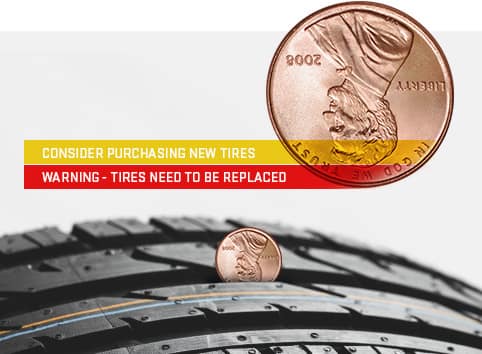 With worn tires, you are at risk of hydroplaning on wet roads. This is when the tire can’t channel the water through the grooves. The car rides along the top of the water instead of staying in contact with the asphalt. As such, the tires can’t respond to the steering system. If you have experienced it, you know how terrifying it can be. In icy or snowy conditions, low tread depth makes it harder to stop. You can also fishtail when accelerating or slide sideways when turning.
With worn tires, you are at risk of hydroplaning on wet roads. This is when the tire can’t channel the water through the grooves. The car rides along the top of the water instead of staying in contact with the asphalt. As such, the tires can’t respond to the steering system. If you have experienced it, you know how terrifying it can be. In icy or snowy conditions, low tread depth makes it harder to stop. You can also fishtail when accelerating or slide sideways when turning.
There are special considerations for driving in hot weather as well. If you are heading into summer and your tires are near the end of their lifespan, be aware that they wear down faster on hot roads.
Easy peasy. All you need to check your tire tread depth is a penny. Insert the penny with Abraham Lincoln’s head upside down. If the top of Abe’s head is showing, it’s time for new tires. Tamara shows you how to do it in this video.
Be thorough when you measure your tread depth. Insert the penny in several places around the tire. It’s not uncommon to have uneven tread wear. Measuring in several places will compensate for this.
Having the proper air pressure in your tires is also critical. Tire air pressure is expressed as a number followed by PSI. This stands for pounds per square inch. 28 PSI means 28 pounds per square inch. It is a measurement of the force inside the tire applied to one square inch. You can check the recommended tire pressure for your car in your owner’s manual or on a sticker inside the driver’s side door. For most vehicles, it is around 32 PSI.
If your pressure is too low, your tires will wear out quicker. You will also get poorer gas mileage. This is because it’s harder for your engine to propel a vehicle riding on squishy tires. Low tire air pressure also results in a jerkier ride. Thankfully, there are plenty of easy ways to score a free tire pressure refill.
Low tire air pressure also results in a jerkier ride. Thankfully, there are plenty of easy ways to score a free tire pressure refill.
If you discover that your tires are too low, fill to the correct pressure. Don’t assume ‘more is better’. There are problems with overinflation as well. When a tire has too much air, it doesn’t have as much surface area in contact with the pavement. This makes it more difficult to handle. It also increases the risk of a blowout. At high speeds, a blowout can be deadly.
Since the early 1970s, the National Highway Traffic Safety Administration (NHTSA) and international counterparts were concerned about the dangers of low air pressure. They were seeking technology that could warn drivers. Evidence was mounting that underinflated tires were a factor in thousands of car accidents each year. At the end of the decade, the NHTSA was also motivated by the energy crisis. Tire air pressure affects fuel economy.
Tire air pressure affects fuel economy.
Tire pressure sensing technology became available in the 1980s and was first used by Porsche on the 1987 Porsche 959. In the U.S., TPMS was federally mandated beginning with the 2007 model year.
There are two types of TPMS, indirect and direct. Direct pressure detectors are located on the tire stems. If the sensor detects a significant drop in pressure, it sends an alert to the engine computer—resulting in a dashboard warning light. The indirect type uses the antilock brake system to detect low pressure by measuring wheel speed. Tires revolve at different speeds depending on air pressure. The indirect method is less reliable and has been largely phased out among manufacturers.
At Chapel Hill Tire, we have been providing professional automotive service to North Carolina drivers since 1953. We help our valued clients choose the right tire and protect their tire investment with alignment and wheel balancing services.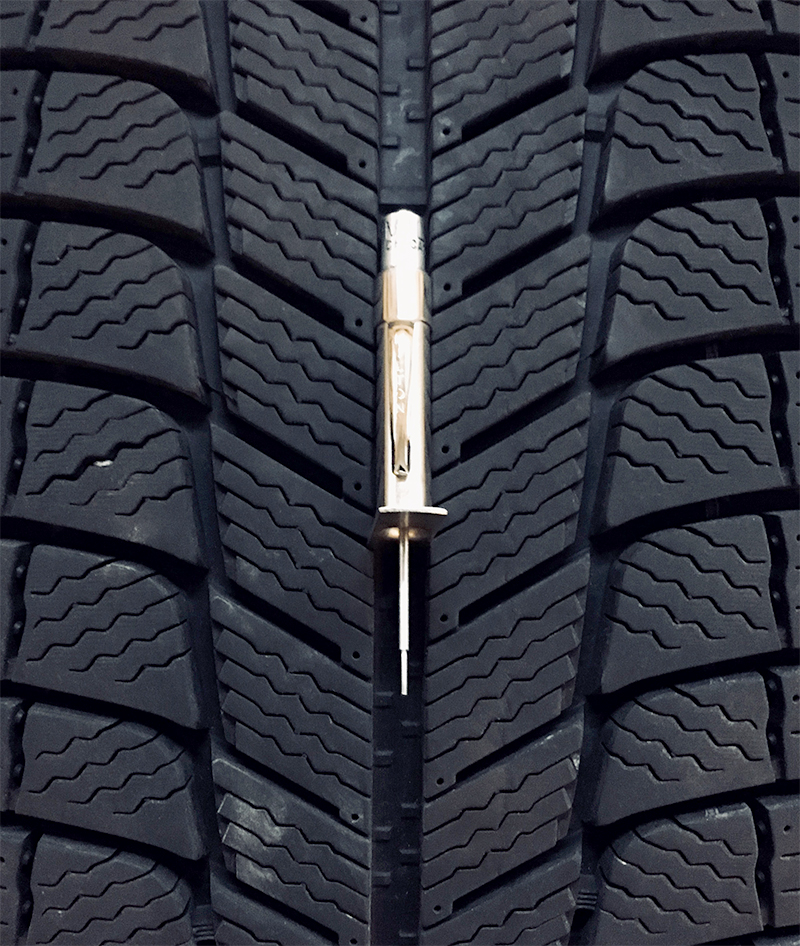
Do you need new tires in Chapel Hill, Raleigh, or Durham? Our experts can help you find the right tires for your vehicle at the lowest possible price. With our Price Beat Guarantee, you can ensure you are getting the best possible price on new tires in the Triangle. Schedule an appointment at one of our eight Triangle-area service centers. We look forward to welcoming you to Chapel Hill Tire!
Back to Resources
In fact, the average life of any tire is 5-7 years, but a lot depends on how the owner treats his car. Aggressive driving, improper seasonal tire storage, unrepaired suspension/balancing problems, incorrect pressure and other errors can significantly shorten tire life. But worn tires can be a serious problem on the road: an increased risk of uncontrolled skidding, hydroplaning, even accidents is the price that drivers and passengers have to pay for using old tires.
Each manufacturer indicates the so-called wear index on the tire profile, which most often looks like the inscription “Treadwear 100” and means a maximum of 48,000 km on a standard road surface (polygon). In a real environment and often not the most ideal roads, this number actually needs to be divided by 1.5 - we get 36,000 km.
In a real environment and often not the most ideal roads, this number actually needs to be divided by 1.5 - we get 36,000 km.
By analogy, if the wear resistance index is 150, then this means “factory” 72 thousand km, 200 - 96 thousand km., and so on.
What are the dangers of worn tires on the road:
adhesion to the roadway deteriorates, which leads to an increased likelihood of skidding, accidents, hydroplaning in case of rainy weather;
reduced cross-country ability in off-road conditions;
increases the risk of a tire puncture while driving.
It is also worth remembering that the issue of tire wear is regulated by traffic rules, and you can get a fine for using “bald” rubber. Knowing what maximum tire wear is acceptable, this is easy to avoid: 1.5-2 mm for summer, and 4-5 mm for winter (a more accurate figure is indicated by the manufacturer).
1. According to the wear indicator on the tire. To find this indicator, you need to inspect the side of the tire and find one of the markings: a triangle, a company logo, a snowflake, or the abbreviation TWI. If the tread has worn down to this indicator, it means that the tire needs to be disposed of urgently.
According to the wear indicator on the tire. To find this indicator, you need to inspect the side of the tire and find one of the markings: a triangle, a company logo, a snowflake, or the abbreviation TWI. If the tread has worn down to this indicator, it means that the tire needs to be disposed of urgently.
2. Many people in the old fashioned way prefer to use a 10-kopeck coin. Insert it into the tread with the inscription "10 kopecks" towards you, and if it is visible, the wear level is too high, you need to replace the tire. This method is convenient, but not entirely accurate: by measuring wear in different parts of the tire in this way, it will be difficult to estimate its unevenness by eye, and this is also an extremely important indicator.
3. It is optimal to use a special gauge, depth ruler or caliper for these purposes. This will allow you to measure the wear of the tread in different parts of the tire with an accuracy of up to a millimeter and understand if there is uneven wear.
If measurements show different results in different parts of the tread, it is important to determine exactly how your tires wear in order to understand where and what the operating error is.
If the tread wears more on the sides and the center wears off less, this means that the tire pressure is insufficient and the contact patch with the road is not correct. This leads not only to poor vehicle stability, but also to increased fuel consumption.
If the tread is worn down the middle but the sidewalls are fine, then your tires are overinflated. Sometimes this is done intentionally in order to save fuel, but in this case, the tires will still have to be changed ahead of schedule.
There is also the possibility of increased wear on the inside or outside of the tread - this indicates an incorrect camber. A visual table with wear options and their causes:
Cracks on the sides of tires can indicate frequent off-road driving, improper storage, low-quality rubber or long service life, as well as incorrect tire pressure.
Bulges or "hernias" on the sides of the tires appear as a result of the side part hitting hard obstacles. Tires with such damage are not recommended.
Dents on the tread indicate insufficient depreciation and unadjusted camber. Having found such damage, it is necessary to drive the car to the service and make sure that the suspension is in good condition.
Individual wear spots on the tread indicate aggressive driving / braking, skidding with wheel locks, or prolonged parking of the car in one position.
Most often, this is required for the sale and purchase of used tires in order to orient the buyer in the degree of their wear. Many sellers give this figure at random, but this method has nothing to do with the actual assessment of the degree of tire wear. It is also important to understand that a conditional 50% wear for a summer tire is an acceptable value, while 50% wear of a winter tire tread is a sign that the tire cannot be used.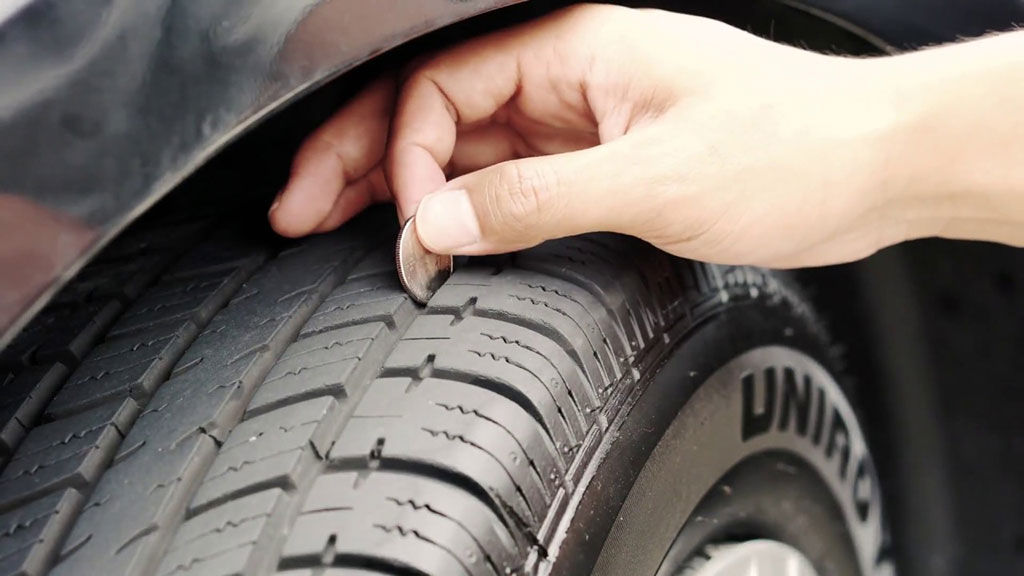 Therefore, it is important to know how to accurately determine the percentage of tire wear so as not to get into an unpleasant situation.
Therefore, it is important to know how to accurately determine the percentage of tire wear so as not to get into an unpleasant situation.
Many people divide the actual tread height by the height of the same, but new tire, and get a certain percentage of wear. This would be correct, if not for one BUT: we cannot physically erase the tread to zero, and the law prohibits the use of tires with a tread below the permitted values.
You can calculate actual tire wear by dividing the difference between the new tire height and the actual tire height by the difference between the new tire tread height and the minimum possible tread height for that tire, and then multiplying this number by 100.
If it is impossible to find out the height of the same, but with a new tire, use the average values of your tire type:
| Tire type | Average tread height at start of use |
| Winter tires with Scandinavian tread | 10 mm |
| Winter with regular or asymmetric tread | 9 mm |
| High-speed winter | 7 mm |
| Summer tires with classic tread | 8 mm |
| Summer speed | 7 mm |
You can check summer tires for wear a little less often than winter tires, since in summer the tread depth is not so important for patency.
If you have assessed the condition of your tires on all of the above factors and realized that the tires are worn out, be sure to replace them with new ones as soon as possible.
The task of calculating the residual life of a tire can arise both when assessing the condition of one's own wheels, and when buying used rubber. In addition to indirect signs, the residual tread height becomes such a criterion. But it can also be calculated based on subjective assumptions, which is what sellers usually do.
Contents of the article:
here and the unknown with the initial depth of the Age and uncertainty with a maximum allowable residual.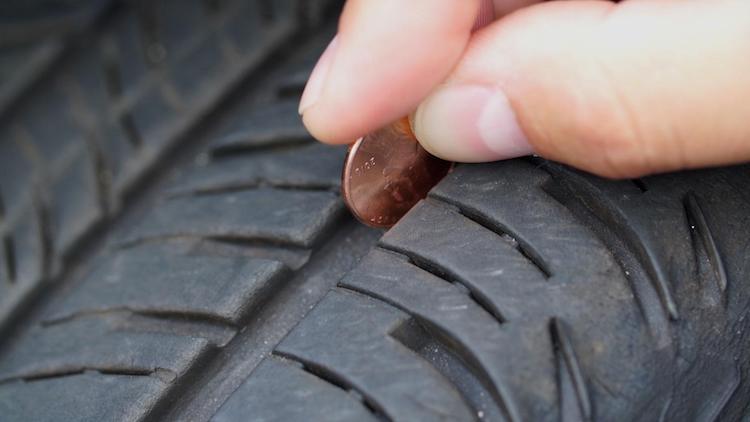 The question requires objectivity.
The question requires objectivity.
The suitability of tires for further use is determined by their ability to meet safety standards, and is set by the manufacturer using wear indicators or numerical values.
In the absence of such, one should be guided by the requirements of the traffic rules, where the minimum allowable tread depth is set, depending on the type and purpose of tires.
Both do not take into account all the features of wear, therefore, taking care of your own safety, you need to approach the issue as objectively as possible, and not be content with formal criteria.
See also: What is wheel bolt pattern and how to measure it
So, for example, if the tread remains within the allowable millimeters, but the terrain is already severely distorted due to uneven wear, the rubber has lost its properties or the initial height was more than typical, then the tire must be sent to the scrap, although according to numerical indicators it meets the standards.
Most of the assessment methods are available to the average user, although not all of them.
A lot can be assessed visually. For example, the color of rubber loses saturation over time, tires become characteristically whitish. This is a good indication that aging has occurred due to oxidation of the tire material.
Mechanical damage is also visible, both natural in the form of age-related cracks and delamination, and artificial, traces of numerous repairs, cord exposure due to cuts, profile bulges under pressure (bumps).
Related article: Spikes or Velcro, which tires are better to use in winter
Very noticeable uneven tread wear in the form of a saw or bald spots. Such a wheel is dangerous when braking.
To estimate the actual residual value, you need to know the original tread value, as well as the minimum allowable for a particular tire model.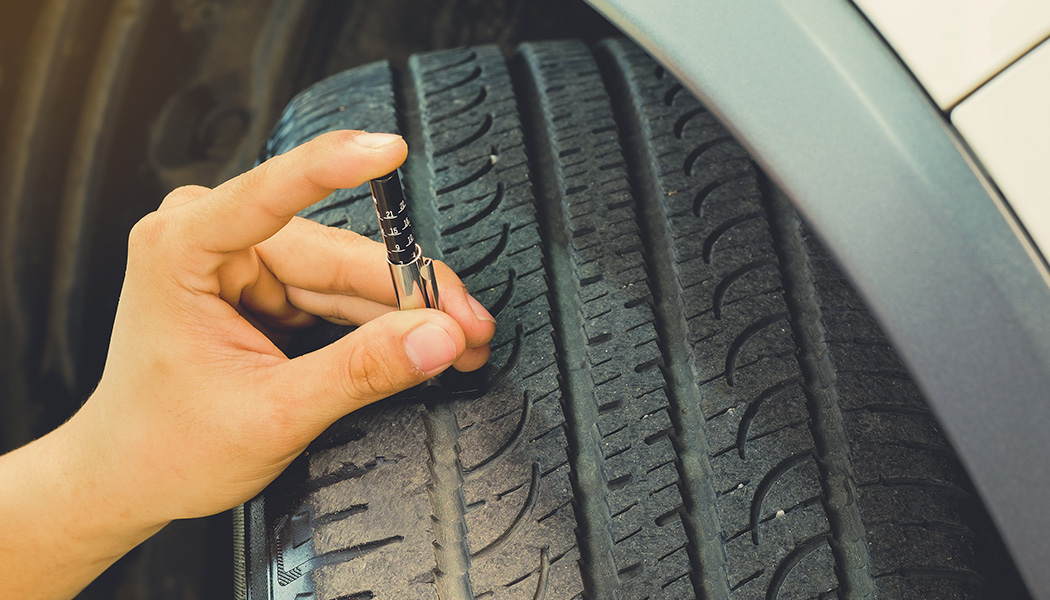 A big mistake that sellers most often deliberately make is to consider percentages based on absolute depth.
A big mistake that sellers most often deliberately make is to consider percentages based on absolute depth.
Do not use the tire until it is completely worn out. Moreover, based on the purpose, rubber can completely lose its properties even with a sufficiently deep pattern.
This applies to winter, mud and all season tyres. They must effectively remove the soft component of the road surface from the contact zone, which is possible only with a sufficiently deep tread.
This is the most convenient way to determine tire wear by the manufacturer. In the rubber of the tread, recesses are made in the form of numbers, which disappear as the rubber wears out. The largest of the remaining ones determines the resource height of the relief.
Other indications are also possible, all of them are simple and most intuitive.
Interesting: What and how to glue the molding on the car door
Up to the use by some manufacturers of color indication, when rubber of a different shade is embedded in the depth of the tread.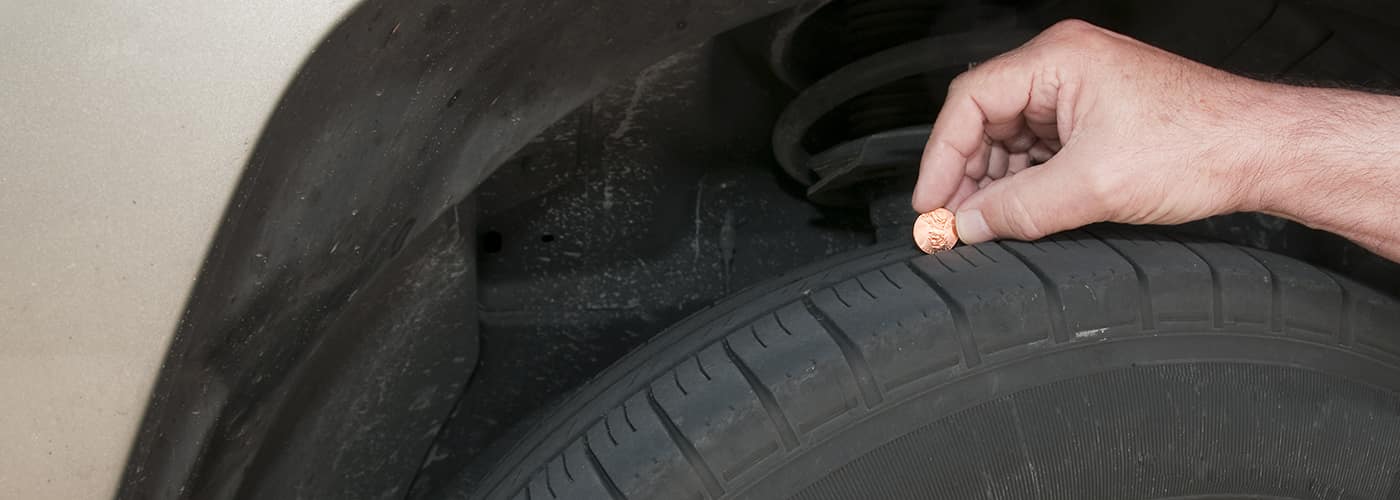 A worn treadmill will then change color to contrast with the rest of the surface.
A worn treadmill will then change color to contrast with the rest of the surface.
Although it is almost impossible to find modern tires without wear indicators at all, the old methods continue to work. Between the checkers or tracks of the tread, you can place a caliper depth gauge, which will show the remaining depth in millimeters.
All that remains is to subtract the minimum allowable value from the resulting number. In the absence of a caliper, you can use a ruler, or even just a coin.
Wheel alignment significantly affects rubber wear, up to complete destruction of the tread for a short run with a strong deviation from the norm.
A distorted toe value results in the formation of a characteristic "saw" on the tracks, which is clearly visible when looking along them. The plane of rotation of the wheel does not coincide with the direction of movement of the car, which is why the tread constantly slips in the contact zone, this causes sawtooth wear.